 
 Main Menu
Main Menu
|
 Nevada Classics
Nevada Classics
|
 Advertise at CC
Advertise at CC
|
 January 2025
January 2025
|
| S |
M |
T |
W |
T |
F |
S |
| |
|
|
1 |
2 |
3 |
4 |
| 5 |
6 |
7 |
8 |
9 |
10 |
11 |
| 12 |
13 |
14 |
15 |
16 |
17 |
18 |
| 19 |
20 |
21 |
22 |
23 |
24 |
25 |
| 26 |
27 |
28 |
29 |
30 |
31 |
|
|
 CC Advertisers
CC Advertisers
|
|

02-10-2002, 07:16 PM
|
 |
Senior Club Cobra Member

|

|
|
Join Date: Mar 2001
Location: Northport,
NY
Cobra Make, Engine: Kirkham, KMP178 / '66 GT350H, 4-speed
Posts: 10,362
|
|

 Not Ranked
Not Ranked
 427SO and NASCAR
427SO and NASCAR
Disclaimer - this is a serious tech question and by no means meant to be provocative in any manner 
Often, a car's engine description will include a "427 NASCAR" in it.
Just what differentiates a 427S/O from a NASCAR version? What are the component and/or spec differences?
How do these specs relate to original blocks used in street or S/C or full-comp models?
All expert opinions are welcome.
|
-
Advertising


02-11-2002, 03:09 PM
|
|
CC Member

|
|
|
Join Date: Oct 2001
Location: Blooming Grove, NY,
Posts: 141
|
|

 Not Ranked
Not Ranked
 Ron
Ron
I wouldn't say that I'm an expert here on this topic but I do have an opinion. The NASCAR engine had heavier rods and to allow for them, wider rod journals. I know the NASCAR rods won't fit on a LeMans crank. Other than that, I don't think there is any difference in the blocks, or the bottom end, such as main caps. I'm not sure which heads they used, although I could certainly look it up in the piles of books I have here on these engines....lol. I have heard that the Tunnel Ports were used there, as well as the Drag Strip, but if you want, I can look into it and make another post ? Hopefully, this clears up some of your questions and if someone else thinks otherwise, I'm all ears.
Cliff
__________________
" Like my Grandfather always told me, if you are truly good at something there's no need to brag, others will be sure to do that for you "
|

02-11-2002, 03:13 PM
|
|
CC Member

|
|
|
Join Date: Oct 2001
Location: Blooming Grove, NY,
Posts: 141
|
|

 Not Ranked
Not Ranked
 I forgot something...lol
I forgot something...lol
How could I have forgot this, of course, the NASCAR motor had it's own unique crank for the those heavier rods.
Cliff
__________________
" Like my Grandfather always told me, if you are truly good at something there's no need to brag, others will be sure to do that for you "
|

02-11-2002, 04:08 PM
|
|
CC Member

|
|
|
Join Date: Feb 2001
Location: Parsippany, NJ USA,
NJ
Cobra Make, Engine: Shelby Mustang with lots of dust, with parts in every room of my house.
Posts: 10
|
|

 Not Ranked
Not Ranked

Ford race 427's blocks were all specially cast with an even higher nickel content than production blocks, a fact that fairly well know in the drag race world long ago. Only the factory supported racers in the know received the special pieces. The standard 427 block is excellent, just wouldn't hold up in blower use (such as a fuel 427 cammer). Lack of special race blocks was the reason the last successful cammer funny car (Tommy Grove) went Chrysler hemi in the early/mid seventies. As said before, later on the true "race" engines had the "NASCAR" crank and rods with wider journals/heavier rods. These were the true "LeMans" pieces, being designed for both LeMans endurance racing and NASCAR. Somehow the production pieces (with capscrew rods) were later dubbed "LeMans", probably to differentiate them from the original "nut and bolt" rods of the early 427's (and 390's/428's). The capscrew rod was a strong but finicky rod its day, with the capscrews being the major reliability culprit. Standard "nut and bolt" rods, while not good enough for NASCAR and endurance racing, were plenty strong, and preferred by drag racers because they were lighter than the capscrew variety, and didn't come apart because one of the factory capscrews failed. Since the "nut and bolt" rods seldom had capscrew type problems, they were often more reliable. In the 60's Ford used both medium riser heads, and later the tunnel port heads in NASCAR. You can be assured that the pieces being raced by the major teams were subtly different than production pieces normally sold in that every trick Holman Moody had discovered made it into the castings used for racing.

|

02-11-2002, 06:13 PM
|
 |
Senior Club Cobra Member

|

|
|
Join Date: Mar 2001
Location: Northport,
NY
Cobra Make, Engine: Kirkham, KMP178 / '66 GT350H, 4-speed
Posts: 10,362
|
|

 Not Ranked
Not Ranked
 ...paging csx4027?...Evan?
...paging csx4027?...Evan?
(Joe, Cliff...thanks for input)
Steve...Evan...
...any help here?
|

02-12-2002, 03:04 PM
|
 |
Senior Club Cobra Member

|

|
|
Join Date: Mar 2001
Location: Northport,
NY
Cobra Make, Engine: Kirkham, KMP178 / '66 GT350H, 4-speed
Posts: 10,362
|
|

 Not Ranked
Not Ranked
ttt...one time.
|

02-12-2002, 04:32 PM
|
 |
CC Member

|
|
|
Join Date: May 2001
Location: The Heart of the Citrus District,
NJ
Cobra Make, Engine: Sold 3047 & 3002 in 2012
Posts: 2,763
|
|

 Not Ranked
Not Ranked
 Cliff
Cliff
I will check back in my notes but so far it sounds like you said it right. The LeMans rods had a tendency to fail because they were too narrow and the original bolts were garbage. I believe that the Nascar crank and rods came out at the end of 1966 because they needed a bottom end that would stay together at a constant 7000 RPM'S. Yes they were heavy and wide and not too desireable by today's standards. I'll look up the scoop I had written down and get back to you...Steve
|

02-15-2002, 02:13 PM
|
 |
Senior Club Cobra Member

|

|
|
Join Date: Mar 2001
Location: Northport,
NY
Cobra Make, Engine: Kirkham, KMP178 / '66 GT350H, 4-speed
Posts: 10,362
|
|

 Not Ranked
Not Ranked
 Evan!!!
Evan!!!
EH...need your 2 cents
(I'd e-mail you but your e-mail hasn't worked since 1992)  |
 Posting Rules
Posting Rules
|
You may not post new threads
You may not post replies
You may not post attachments
You may not edit your posts
HTML code is Off
|
|
|
All times are GMT -7. The time now is 07:55 AM.
|




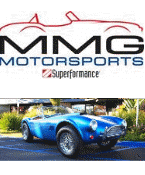


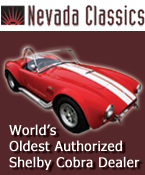
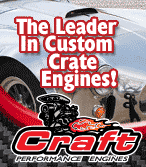

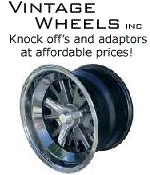


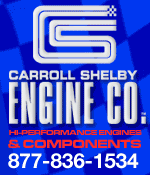








 Linear Mode
Linear Mode



